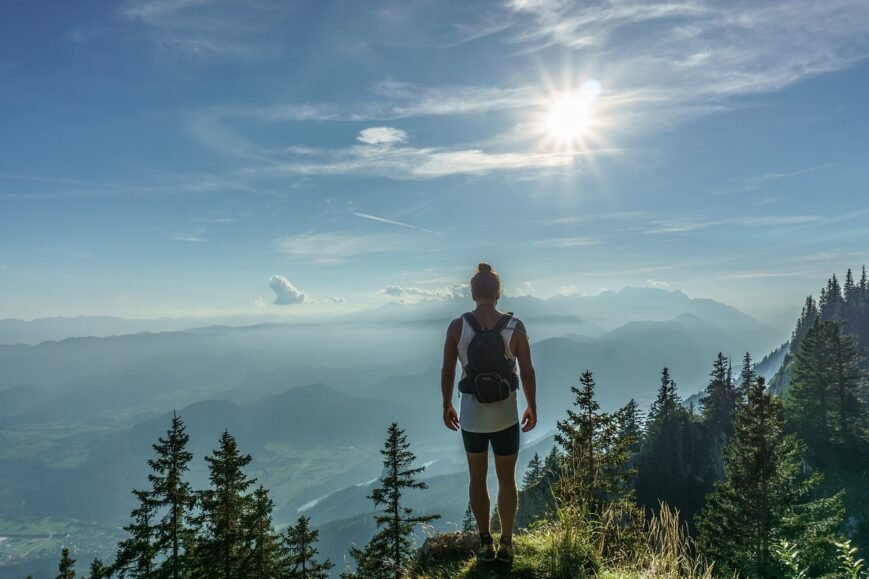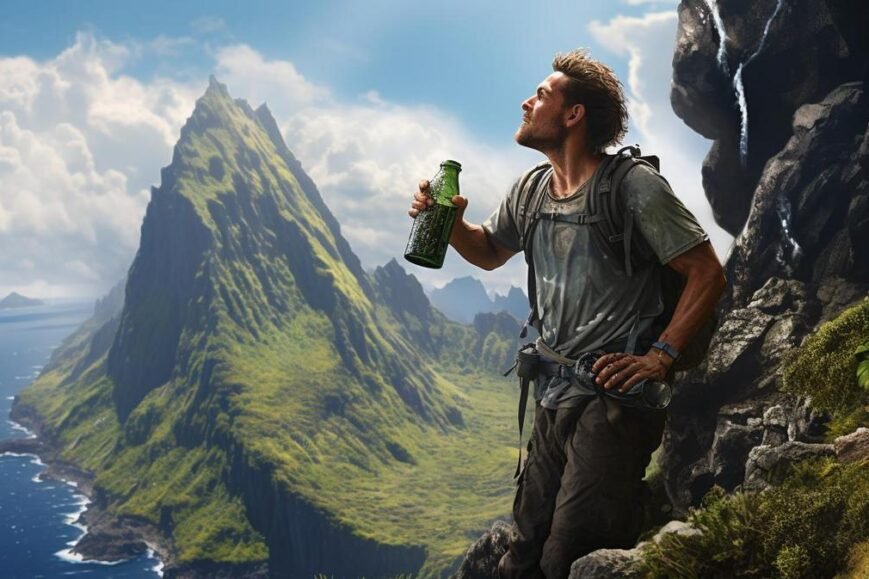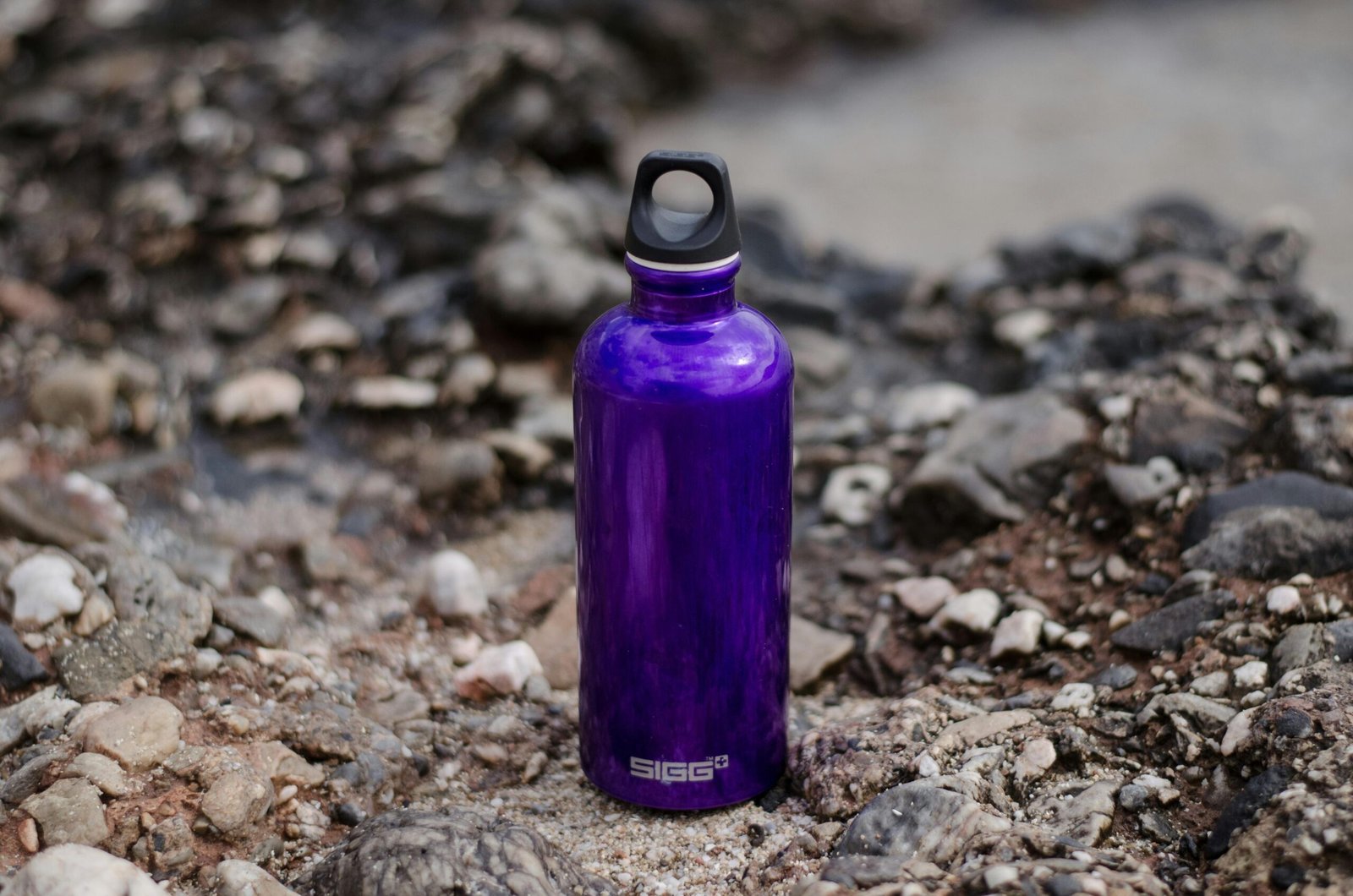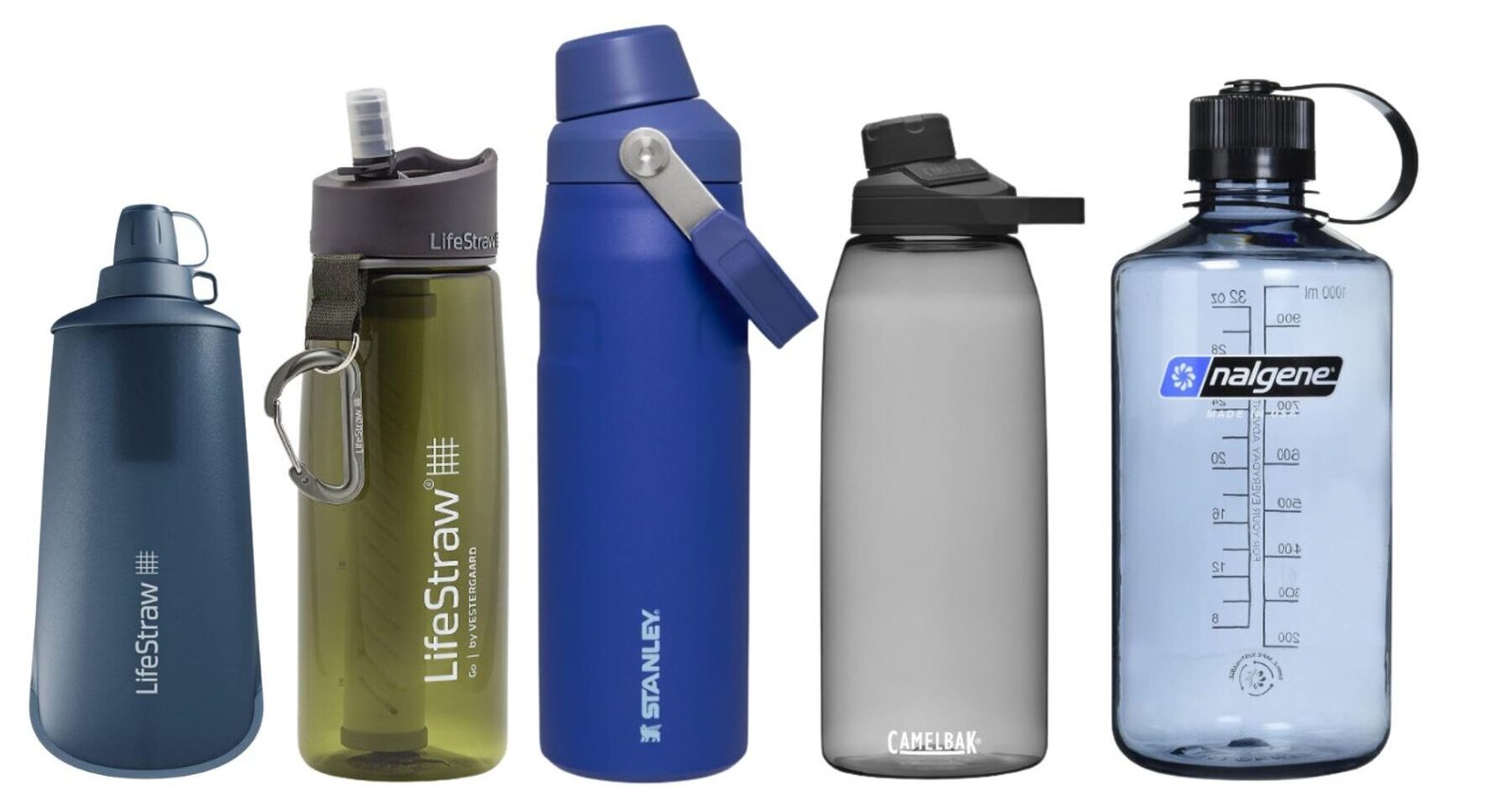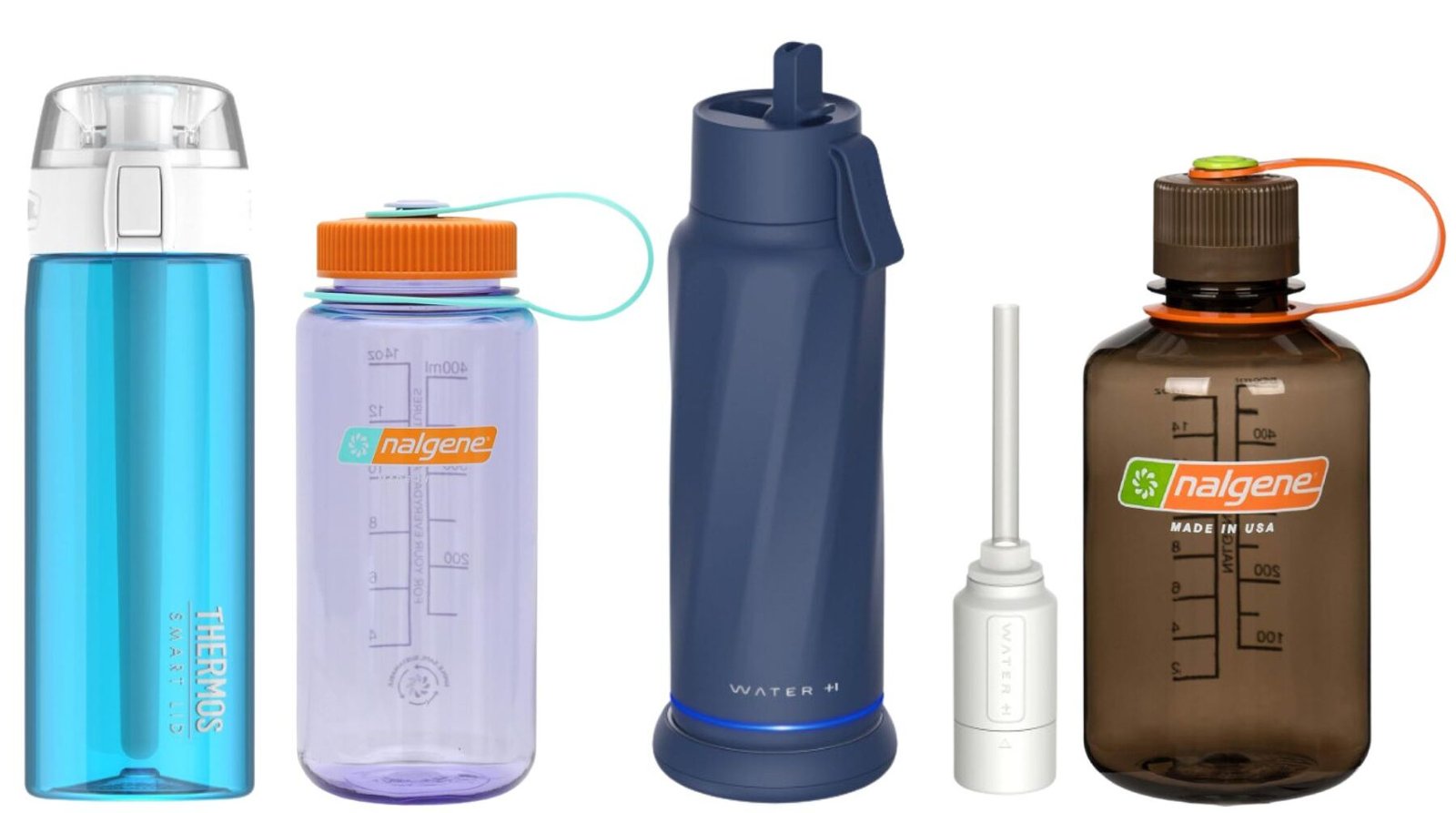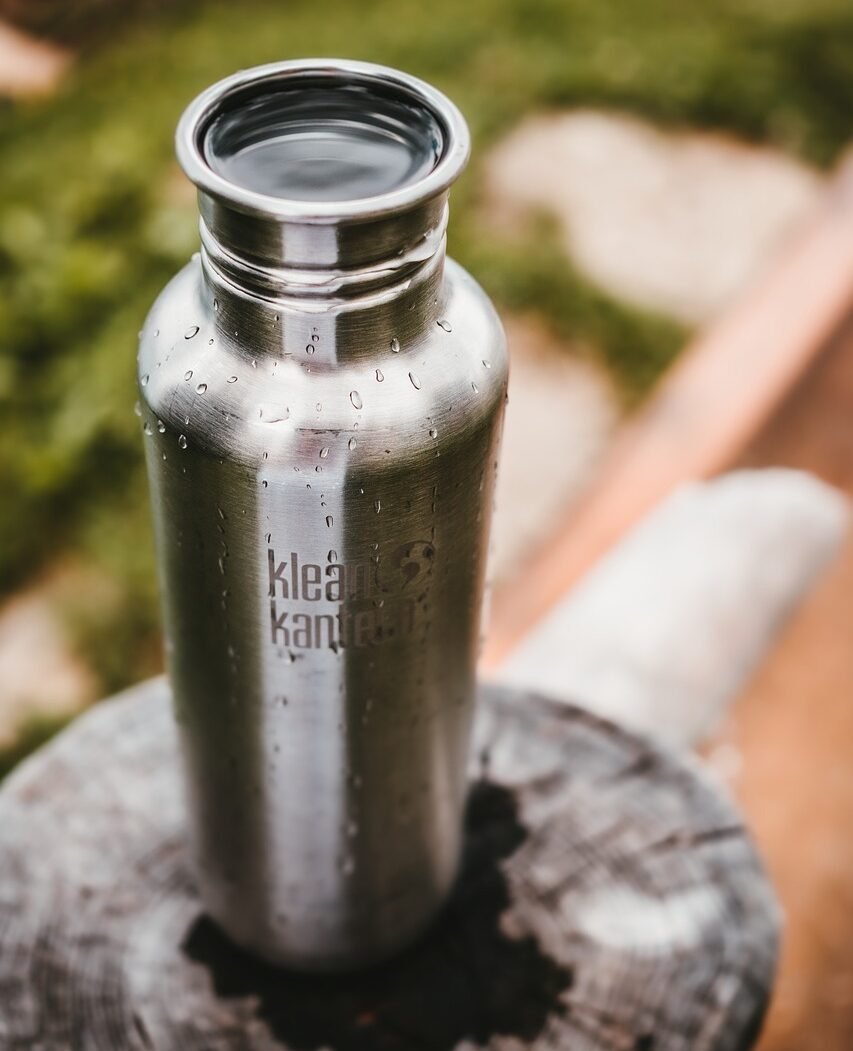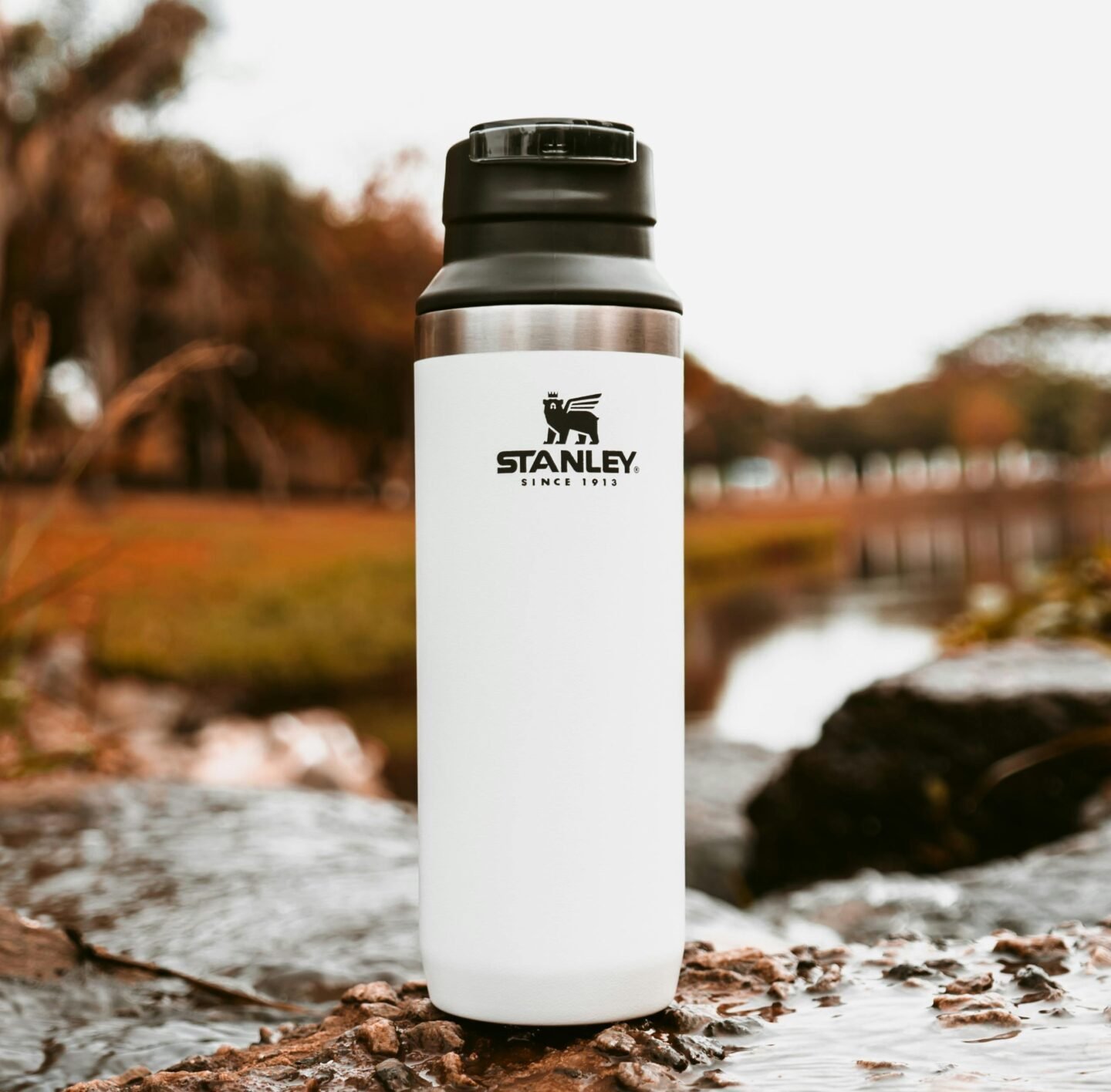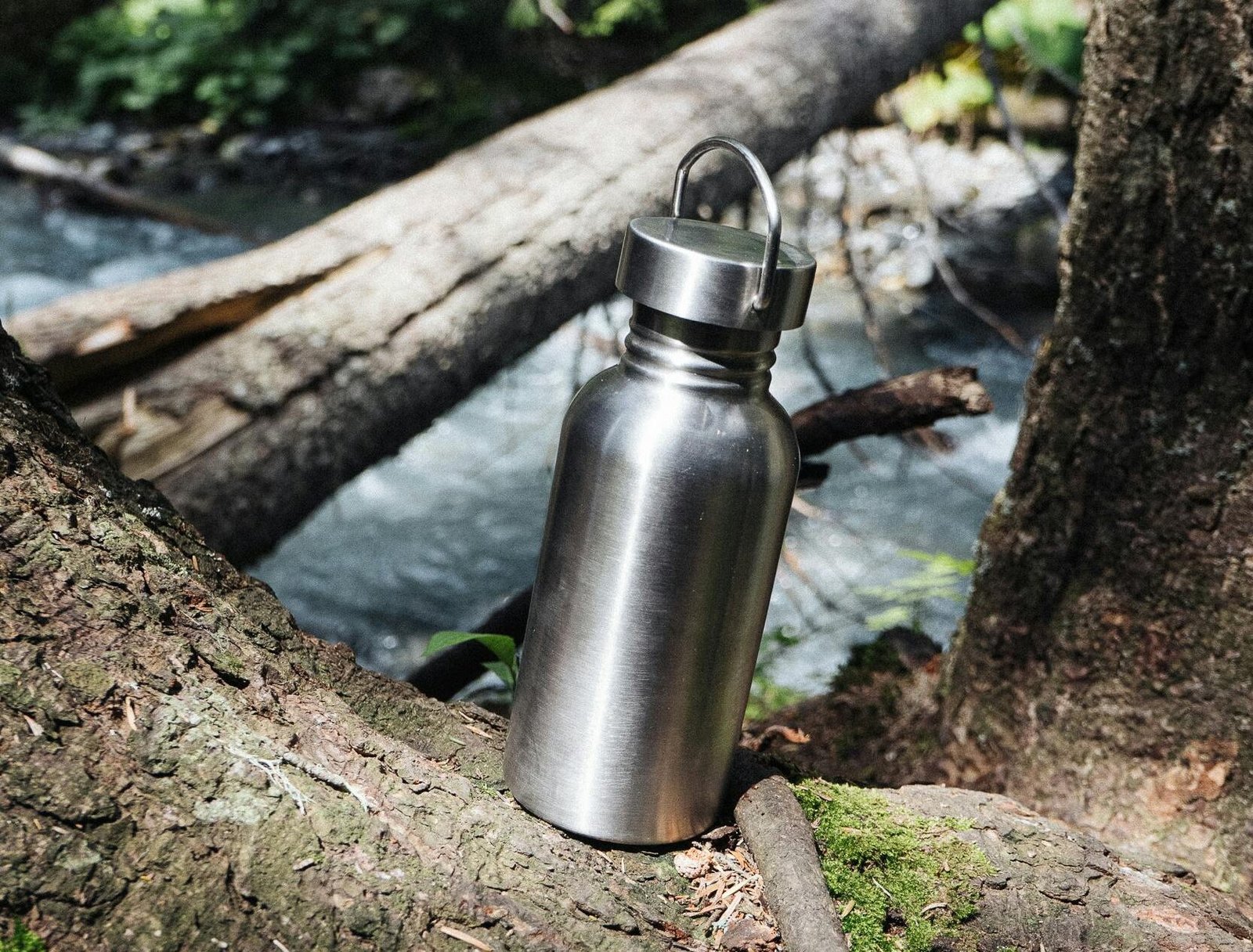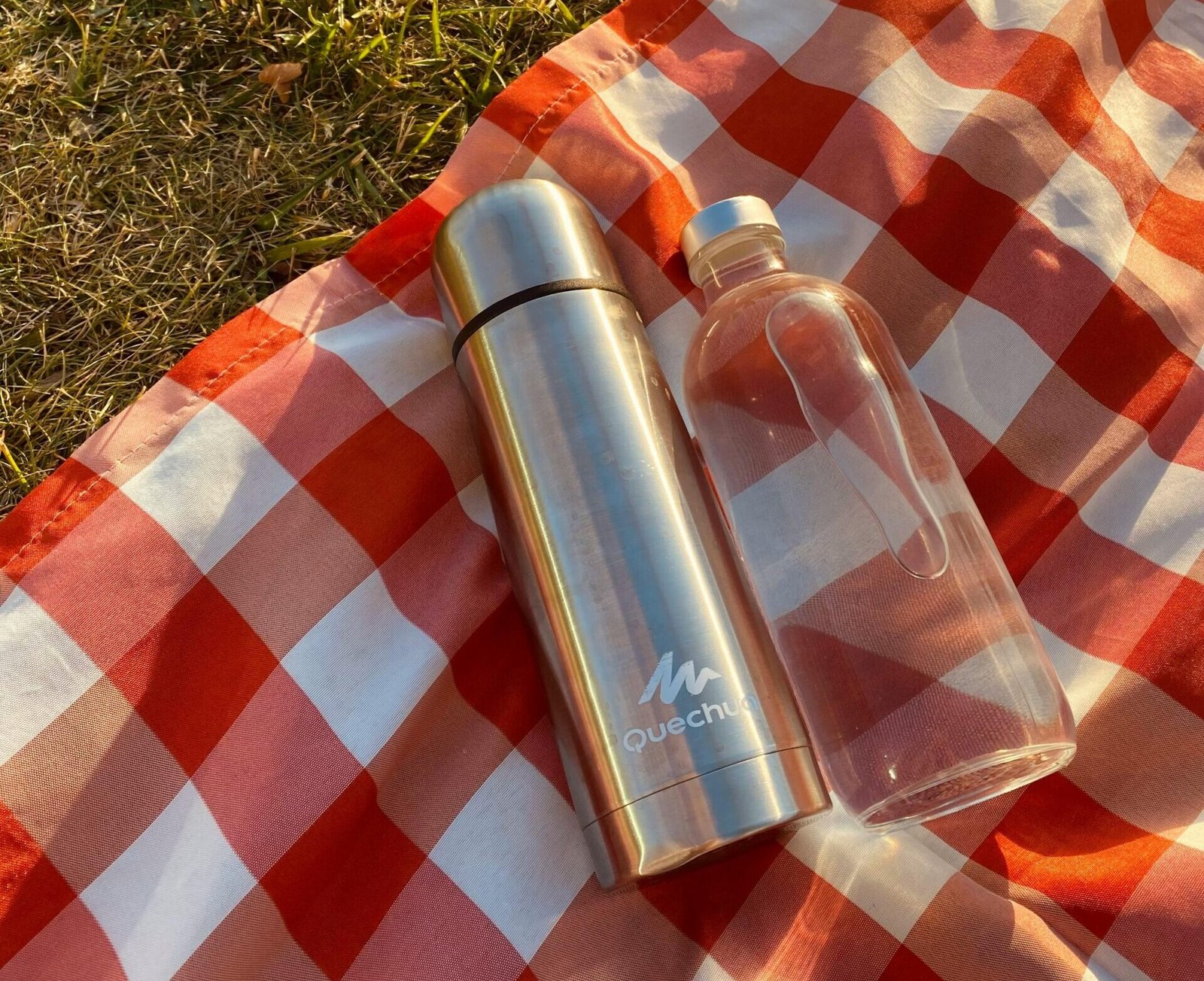Brief Overview
The Katadyn Vario Water Filter is a versatile and high-performing water treatment solution designed to meet the needs of a wide range of outdoor enthusiasts, backcountry travelers, and emergency preparedness enthusiasts. As part of Katadyn’s line of portable water filtration systems, the Vario model combines advanced filtration technology, user-friendly features, and compact portability to provide a reliable and flexible way to access clean, safe drinking water in remote or emergency situations.
Engineered to address the diverse water quality challenges encountered in various environments, the Katadyn Vario offers a unique dual-filter system that can be adjusted to suit the specific conditions, allowing users to efficiently remove a broad spectrum of contaminants, from bacteria and protozoa to particulates and sediment.
Katadyn Vario
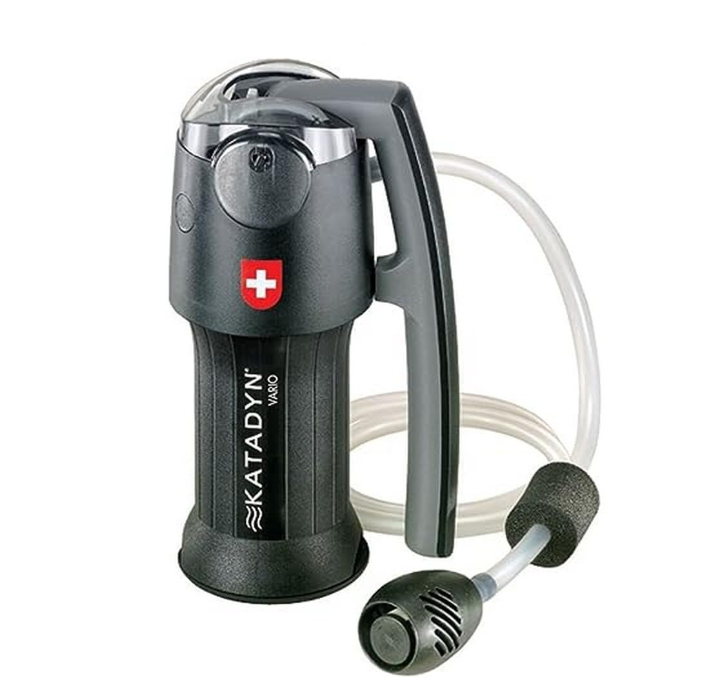
Specifications
- Weight: 15 ounces (425 grams)
- Dimensions: 7.5 x 3.5 inches
- Filter Type: Pump filter
- Filter Medium: Ceramic pre-filter and glass fiber filter
- Output: Up to 2 quarts (2 liters) per minute
- Capacity: Up to 500 gallons (1875 liters) depending on water quality
- Cartridge Life: Up to 2,000 liters (depending on water quality)
- Hose Length: 36 inches
- Field Maintainable: Yes
- Compatible With: Standard wide-mouth water bottles and hydration bladders
- Flow Rate: Adjustable dual-piston pump mechanism
- Ideal For: Backpacking, camping, and emergency preparedness
First Impressions
The initial impression is that this thing is solid like a tank. The compact and portable build, combined with its sturdy and durable construction, immediately conveys a sense of reliability and practicality that is well-suited for use in a variety of outdoor and emergency scenarios.
A closer look shows features that contribute to its overall versatility and ease of use. The ability to switch between fast and efficient “filter” and “purifier” modes, each with its own specialized filter cartridge, demonstrates the filter’s adaptability to different water conditions and user requirements.
The inclusion of a convenient carrying case, as well as the filter’s lightweight and compact dimensions, further reinforce the Vario’s suitability for a wide range of outdoor activities, emergency preparedness needs, and travel scenarios.
Overall, the first impression of the Katadyn Vario Water Filter is that of a well-engineered, user-friendly, and highly versatile water treatment solution that is designed to provide reliable and efficient access to clean drinking water in a variety of challenging environments.
What We Like
One of the standout features of the Katadyn Vario Water Filter is its exceptional versatility, which is enabled by its unique dual-filtration system and adaptable design. The filter’s ability to switch between a “filter” mode, which efficiently removes particulates and sediment, and a “purifier” mode, which provides advanced protection against bacteria and protozoa, allows users to tailor the filtration process to the specific water conditions they encounter.
This versatility is further enhanced by the Vario’s adjustable pump mechanism, which enables users to control the flow rate and pressure based on their needs. Whether users require a faster flow rate for refilling water bottles or a slower, more deliberate process to enhance the filtration quality, the Vario’s intuitive controls make it easy to optimize the performance to suit the situation at hand.
Another key strength of the Katadyn Vario is its impressive filtration performance, which is achieved through the use of high-quality filter cartridges and advanced filtration technology. The filter’s ability to remove a wide range of contaminants, including bacteria, protozoa, and particulates, provides users with a high degree of confidence in the safety and purity of the water they consume, making it a reliable choice for both outdoor adventures and emergency preparedness scenarios.
The Vario’s user-friendly design and intuitive controls are also noteworthy features that contribute to an overall positive user experience. The clear flow indicators, comfortable handle, and simple operation allow users to efficiently and confidently operate the filter, even in challenging environments or under stress.
Finally, the Katadyn Vario’s robust and durable construction, featuring high-quality materials and a sturdy build, instills a sense of confidence in the filter’s ability to withstand the rigors of outdoor use and provide reliable performance over an extended period. The filter’s resistance to damage, as well as its easy-to-maintain design, contribute to its overall longevity and suitability for users who demand a dependable and long-lasting water treatment solution.
What We Don’t
While the Katadyn Vario Water Filter is an exceptional product that excels in many areas, there are a few aspects of the filter that may not appeal to all users or be considered as significant drawbacks.
One potential limitation of the Vario is its relatively slow flow rate, particularly when operating in the “purifier” mode, which may not be ideal for users who require a high volume of water in a short period of time. While the adjustable pump mechanism allows for some control over the flow rate, the filter’s maximum output of 1 liter per minute in purifier mode may not meet the needs of large groups or those who require rapid water replenishment.
Another potential drawback of the Vario is its somewhat bulkier and heavier design compared to some of the more compact and ultralight water filters on the market. Although the filter’s dimensions and weight are still relatively manageable for most outdoor activities, users who prioritize minimalist and ultraportable gear may find the Vario to be a less appealing option, particularly for extended backcountry excursions where every ounce of weight matters.
Additionally, the Vario’s reliance on replaceable filter cartridges may be a consideration for some users, as it introduces an ongoing cost and potential availability concern, especially for those who plan to use the filter in remote or hard-to-reach locations. While the filter cartridges are widely available and reasonably priced, the need for periodic replacement may be a drawback for users who prefer a more self-contained or maintenance-free water treatment solution.
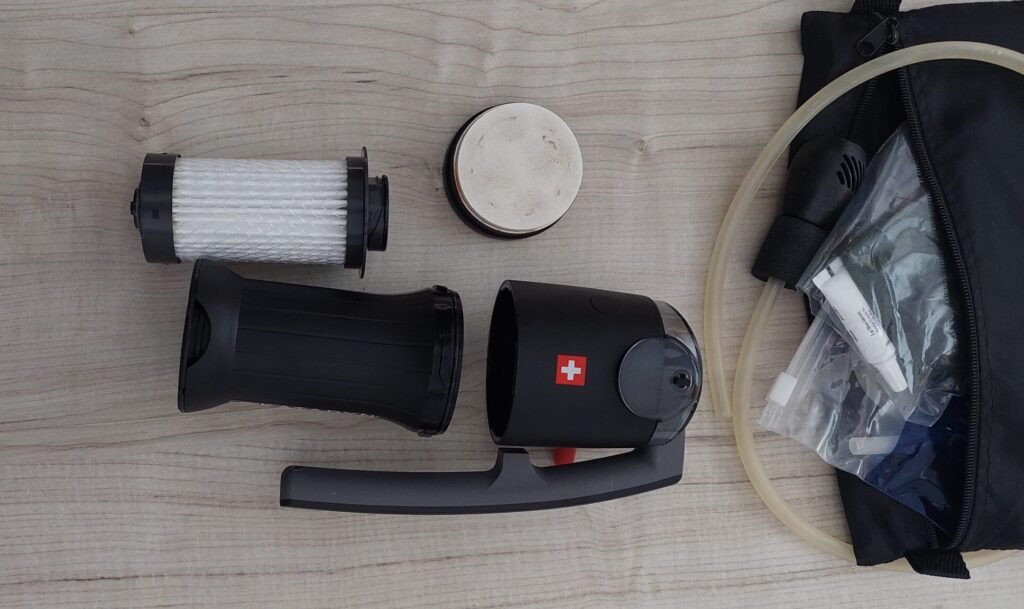
It’s important to note, however, that these potential drawbacks are largely subjective and may not be dealbreakers for all users, as the Katadyn Vario’s overall strengths and versatility make it a compelling option for a wide range of outdoor activities, emergency preparedness needs, and travel scenarios.
The Specs
Key Features:
- Design: The Katadyn Vario Water Filter features a compact and user-friendly design that prioritizes versatility and ease of use. The filter’s adjustable pump mechanism, intuitive control knob, and clear flow indicators contribute to an efficient and intuitive user experience.
- Dimensions: The Vario measures approximately 7.1 inches (18 cm) in height and 3.9 inches (10 cm) in diameter, making it a compact and portable option for a wide range of outdoor activities and emergency preparedness needs.
- Weight: The Katadyn Vario Water Filter weighs 1.2 pounds (544 grams), including the filter cartridge, which is a relatively lightweight and manageable weight for most users.
- Convenient Features: The Vario’s carrying case, integrated hose, and easy-to-maintain design elements contribute to its overall convenience and suitability for use in a variety of environments and scenarios.
Ease of Use
The Katadyn Vario Water Filter is designed with a strong emphasis on user-friendliness and intuitive operation, making it an accessible and efficient choice for a wide range of outdoor enthusiasts, travelers, and emergency preparedness enthusiasts.
One of the standout features that contributes to the Vario’s ease of use is its adjustable pump mechanism, which allows users to control the flow rate and pressure based on their specific needs. Whether they require a faster flow for quickly refilling water bottles or a slower, more deliberate process to enhance the filtration quality, the Vario’s intuitive controls make it easy to optimize the performance to suit the situation at hand.
The filter’s clear flow indicators and simple control knob further enhance the user experience by providing clear visual feedback on the filtration process and enabling intuitive adjustments on the fly. This level of transparency and control helps to instill confidence in the user, ensuring that they can efficiently and effectively operate the Vario to meet their water treatment needs.
The user-friendly design extends to its overall setup and maintenance as well. The filter’s compact and modular construction, combined with its easy-to-access cartridges, make it a straightforward process to assemble, disassemble, and clean the device, even in challenging outdoor environments. The inclusion of a carrying case and the filter’s lightweight portability further contribute to its convenience, allowing users to readily transport and store the Vario as needed.
Additionally, the Katadyn Vario’s versatility, with its ability to switch between “filter” and “purifier” modes, enhances its ease of use by providing users with the flexibility to adapt the filtration process to the specific water conditions they encounter.
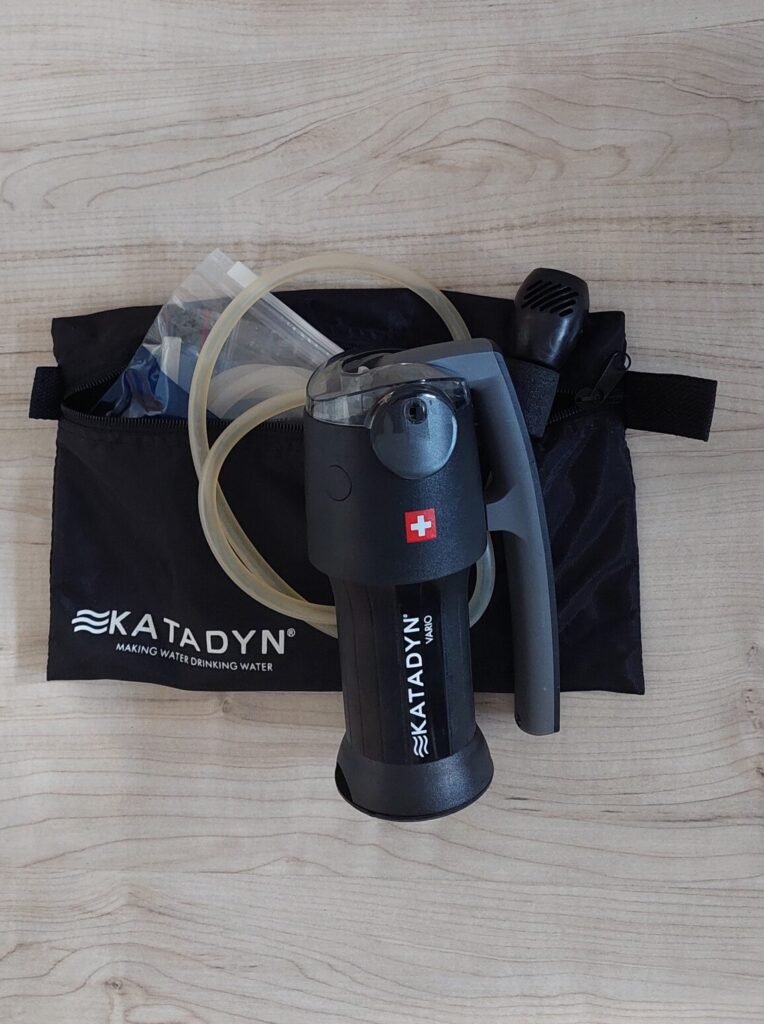
Overall Performance
The Katadyn Vario Water Filter delivers an impressive level of overall performance, with its advanced filtration capabilities, versatile design, and reliable functionality making it a compelling choice for a wide range of outdoor activities, travel, and emergency preparedness applications.
One of the standout aspects of the Vario’s performance is its exceptional filtration quality, which is achieved through the use of a dual-cartridge system that can effectively remove a broad spectrum of contaminants, including bacteria, protozoa, particulates, and sediment. The filter’s ability to switch between “filter” and “purifier” modes, each with its own specialized cartridge, allows users to tailor the filtration process to the specific water conditions they encounter, ensuring a high level of water purity and safety.
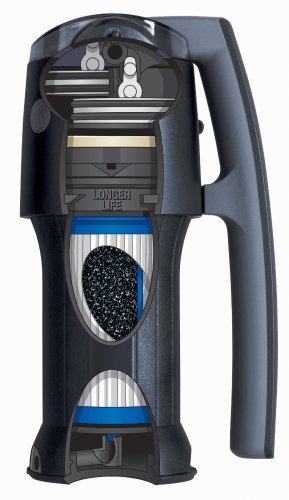
The Vario’s versatility is another key factor contributing to its overall performance, as the filter’s adjustable pump mechanism and intuitive controls enable users to optimize the flow rate and pressure based on their needs. This adaptability is particularly useful in a variety of outdoor and emergency scenarios, where the ability to quickly refill water bottles or take a more deliberate, thorough approach to filtration can be invaluable.
In terms of reliability and durability, the Katadyn Vario excels, with its robust construction and high-quality materials ensuring that the filter can withstand the rigors of frequent use and exposure to challenging environmental conditions. The filter’s easy-to-maintain design and the availability of replacement cartridges further enhance its long-term performance and suitability for extended outdoor adventures or emergency preparedness scenarios.
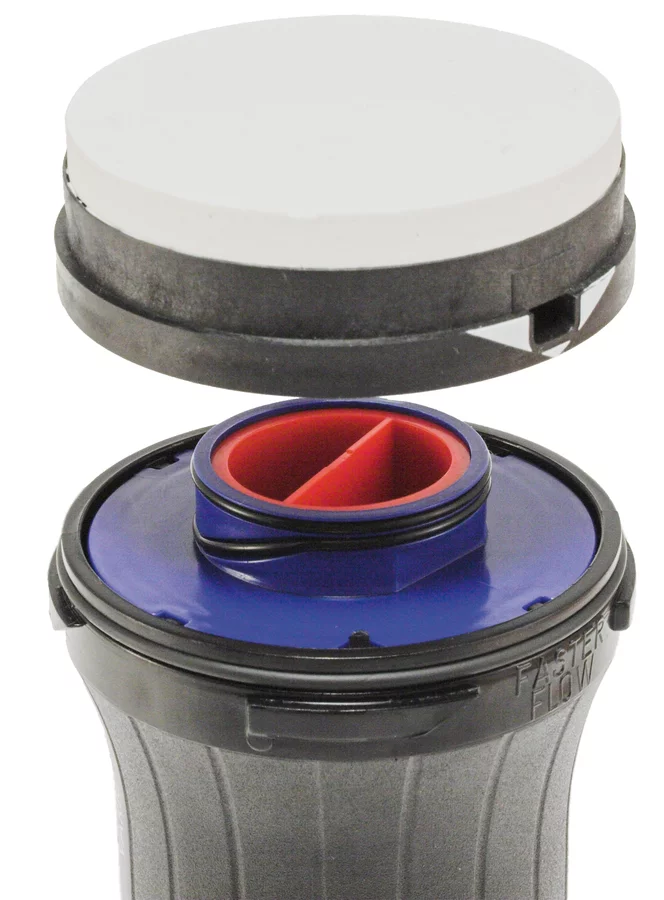
While the Vario’s relatively slow maximum flow rate of 1 liter per minute in purifier mode may not be ideal for users who require rapid water replenishment, the filter’s overall functionality and adaptability make it a highly capable and efficient solution for a wide range of applications. The Vario’s ability to effectively remove a broad spectrum of contaminants, coupled with its user-friendly design and versatile performance, contribute to an overall level of excellence that sets it apart as a reliable and dependable water treatment solution.
Best Uses
The Katadyn Vario Water Filter is a versatile and well-suited companion for a diverse range of outdoor activities, travel scenarios, and emergency preparedness needs.
Outdoor Activities
The Vario’s exceptional filtration capabilities, adjustable flow rate, and durable construction make it an excellent choice for a wide variety of outdoor pursuits. The filter’s ability to efficiently remove bacteria, protozoa, and particulates from water sources encountered in the backcountry provides users with a high degree of confidence in the safety and purity of their drinking water, which is essential for maintaining hydration and avoiding waterborne illness during outdoor adventures.
Travel
The Katadyn Vario’s compact and portable design, combined with its ability to filter a wide range of water sources, make it a practical and reliable choice for travelers seeking a dependable water treatment solution. Whether users are exploring remote regions, navigating areas with questionable water quality, or simply seeking to reduce their reliance on bottled water, the Vario’s versatility and performance make it a compelling option for a variety of travel scenarios.
Emergency Preparedness
The Katadyn Vario’s robust construction, easy-to-use design, and effective filtration capabilities position it as a valuable asset for emergency preparedness and disaster relief applications. In the event of natural disasters, infrastructure failures, or other emergency situations where access to clean drinking water is compromised, the Vario can provide a reliable and efficient means of purifying water, helping to ensure the health and safety of individuals and communities in need.
While the Vario may not be the optimal choice for users who require extremely rapid water replenishment or large volumes, its overall versatility and performance make it a solid choice for the average long-distance hiker.
Comparison to Other Water Filters on the Market
When compared to other popular water filters and purifiers available on the market, the Katadyn Vario Water Filter stands out as a versatile and well-rounded solution that offers a compelling balance of features, performance, and user-friendliness.
Sawyer Squeeze Water Filter
A lightweight and highly portable option that is often favored by ultralight backpackers and minimalist outdoor enthusiasts. While the Sawyer Squeeze may offer a more compact and streamlined design, the Katadyn Vario’s dual-filtration system, adjustable flow rate, and comprehensive contaminant removal capabilities provide a more comprehensive and adaptable water treatment solution for a wider range of outdoor activities and environments.
MSR Guardian Purifier
A high-performance water treatment system that is known for its advanced filtration technology and rugged construction. While the Guardian may offer superior filtration capabilities and a faster flow rate, the Katadyn Vario’s user-friendly design, versatile functionality, and more affordable price point make it a compelling alternative for users who don’t require the Guardian’s specialized features or are seeking a more budget-friendly option.
Grayl Geopress Water Purifier
Another water filter system that shares some similarities with the Katadyn Vario, particularly in its ability to remove a broad spectrum of contaminants. However, the Grayl Geopress’s unique press-and-filter design sets it apart, providing a more streamlined and self-contained approach to water purification that may be appealing to some users. The Katadyn Vario’s adjustable flow rate and dual-filtration system, on the other hand, offer a higher degree of versatility and customization for users who require more control over the filtration process.
While there are several high-quality water filters and purifiers available on the market, the Katadyn Vario stands out as a well-rounded and versatile solution that effectively balances performance, user-friendliness, and value.
Our Final Thoughts
The Katadyn Vario Water Filter is a standout product that exemplifies the brand’s commitment to providing reliable and user-friendly water treatment solutions for outdoor enthusiasts, travelers, and preppers.
One of the Vario’s most impressive attributes is its exceptional versatility, which is enabled by its unique dual-filtration system and adjustable pump mechanism. The ability to switch between “filter” and “purifier” modes, each with its own specialized cartridge, allows users to tailor the filtration process to the specific water conditions they encounter, ensuring a high level of water purity and safety regardless of the environment.
The Vario’s intuitive design and user-friendly controls further contribute to an overall positive user experience, making it an accessible and efficient choice for a wide range of individuals, from experienced outdoor adventurers to those new to water treatment in the field. The filter’s clear flow indicators, comfortable handle, and simple operation allow users to confidently and effectively operate the device, even in challenging environments or under stress.
While the Vario’s relatively slow maximum flow rate in purifier mode may not be ideal for users who require rapid water replenishment, the filter’s overall functionality, adaptability, and robust construction make it a highly capable and reliable companion for a diverse array of outdoor activities, travel scenarios, and emergency preparedness needs.
FAQ
Q. How does the Katadyn Vario Water Filter work?
The Katadyn Vario Water Filter utilizes a dual-filtration system that includes a ceramic pre-filter and a glass-fiber filter. The ceramic pre-filter removes larger particulates and sediment, while the glass-fiber filter removes bacteria and protozoa. Users can switch between “filter” and “purifier” modes to optimize the filtration process based on water conditions.
Q. How often should I replace the filter cartridges?
The frequency of filter cartridge replacement depends on the quality of the water being filtered and the amount of use. The ceramic pre-filter can be cleaned and reused, while the glass-fiber filter should be replaced approximately every 500 gallons (2,000 liters) or when the flow rate noticeably decreases.
Q. Is the Katadyn Vario Water Filter suitable for international travel?
Yes, the Katadyn Vario Water Filter is suitable for international travel. Its ability to remove a wide range of contaminants, including bacteria and protozoa, makes it a reliable choice for filtering water from various sources around the world. However, it is important to note that the Vario does not remove viruses, so additional precautions may be necessary in areas with known viral contamination.
Q. Can the Katadyn Vario filter saltwater?
No, the Katadyn Vario Water Filter is not designed to filter saltwater. It is intended for use with freshwater sources such as rivers, lakes, and streams. Filtering saltwater can damage the filter and render it ineffective.
Q. How do I clean and maintain the Katadyn Vario Water Filter?
To clean and maintain the Katadyn Vario, disassemble the filter and rinse the ceramic pre-filter under clean water to remove any accumulated sediment. The glass-fiber filter can be gently rinsed if necessary, but it should not be scrubbed or cleaned with soap. Regularly inspect the O-rings and replace them if they show signs of wear or damage. Store the filter in a clean, dry place when not in use.
![]()


